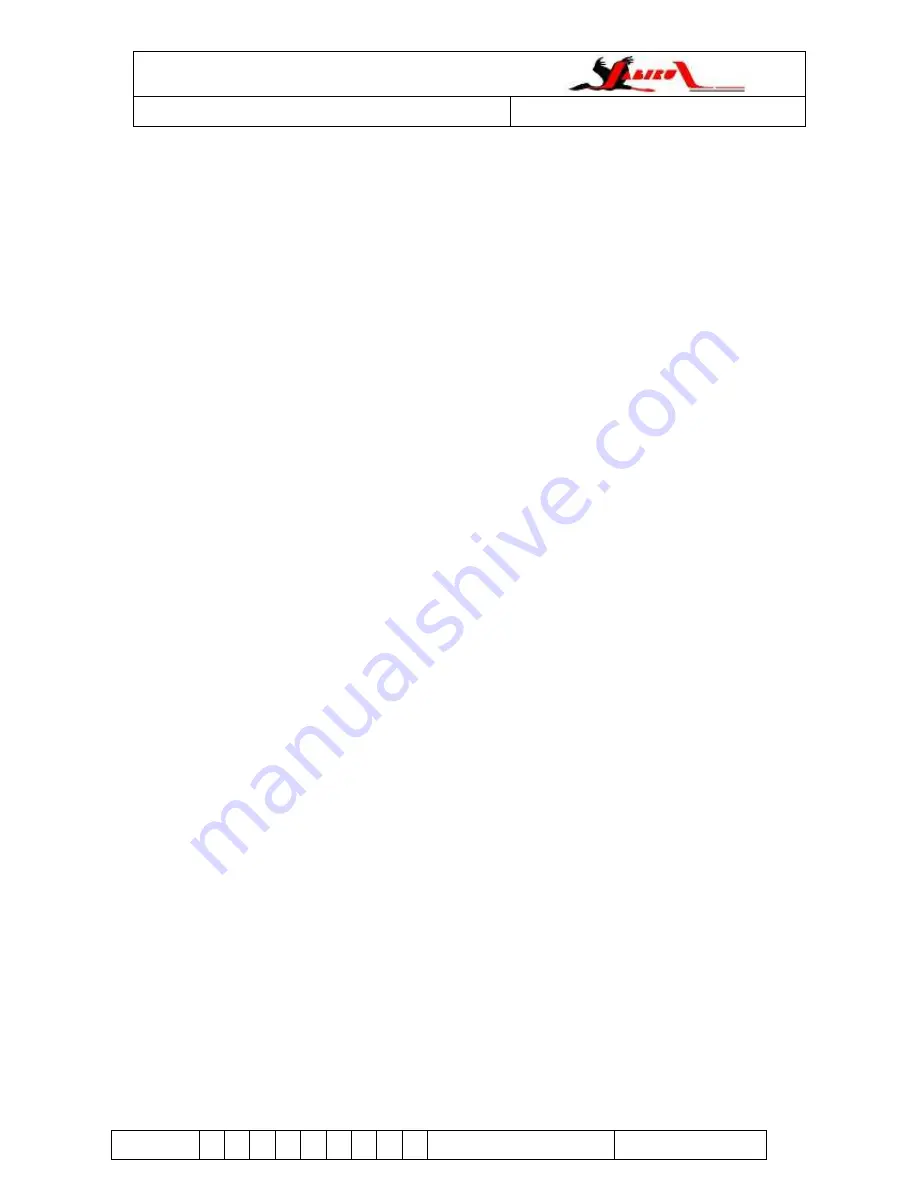
Jabiru Aircraft
Pty Ltd
Installation Manual
Jabiru 3300 Aircraft Engine
REVISION
0
1
2
3
4
5
6
7
Dated : 1
st
Dec 2016
Page: 43 of 56
12 Cooling Systems
12.1
General Principles
An ideal cooling system:
i.
Controls engine temperatures through speeds ranging from taxiing on the ground through to V
NE
.
ii.
Controls the engine temperatures through a wide range of angles of attack.
iii.
Is simple to build, install and maintain
iv.
Produces minimum drag
v.
Requires no pilot attention
vi.
Is not affected by rain, dirt or insects sticking to it.
vii.
And weighs next to nothing
For the sa
ke of the following discussion, a “gap” is considered an opening roughly large enough to slide two
fingers into
– around 13mm by 32mm (0.5” by 1 ¼ “).
The total area of the air intakes (combined cylinder head and oil cooling openings) should generally be no
more than one third the total area of the cowl outlet (the outlet area must be a minimum of about 3 times as
large as the total area of the inlets). This assumes that the outlet area is oriented effectively (see Figure 58).
Each cowl cylinder head Inlet of a Jabiru Aircraft has an area of approximately 10,500mm
2
(16.25 in
2
). Oil
cooler inlets have an area of approximately 12,500mm
2
(19.4 in
2
). This gives a required total outlet area of
approximately 100,500mm
2
(155 in
2
). These sizes are based on a Jabiru Aircraft. Inlet and outlet sizes
required will vary depending on the aircraft’s speed, drag and the positions of the inlets and outlets – the
areas given should be used as a guide and starting point only.
A generalised picture of the airflow and air temperature is shown in Figure 47.
Most of the time, air leaking through gaps instead of flowing though a cylinder head, oil cooler or similar is
waste air
– it does not transfer heat and does not cool the engine. Sometimes air leaking through controlled
gaps
– such as the holes in the front of the ram air ducts (Figure 50) or the gaps between cylinders – can
have beneficial effects. However, it is recommended that gaps around the engine and oil cooler be closed
as a starting point.
The propeller &
rush of air from the aircraft’s speed make it easier to get air into the cowl than to get it out.
Too much air flowing through the oil cooler can restrict airflow through the cylinder heads, & vice versa.
The pressure difference between the low pressure outlet area of the cowls and the high pressure inlet areas
controls the amount of air flowing through the engine. The pressure differential testing described in Section
12.5 gives target pressures.
During developmental work it is strongly recommended that each cylinder head has it’s own temperature
sensor. Modifications to cowls etc can have unpredictable effects and normally a change will affect each
cylinder head differently
– i.e. head #4 may cool down while head #3 heats up.
Testing of an installation in a Jabiru Aircraft showed that the heat radiating from the engine exhaust system
normally has a minimal effect. Wrapping the exhaust in insulation etc does not produce a measurable
temperature reduction during taxi or in the air.
WARNING
The limits in the Specification Sheet, contained in Appendix B, must be strictly adhered to. Warranty will
not be paid on engine damage attributed to overheating of cylinders or oil.




























